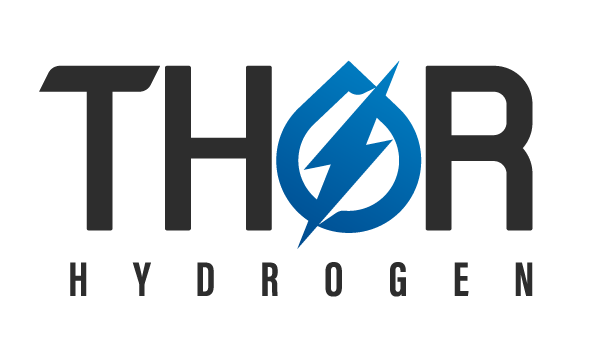A Green-light for Green Hydrogen in Atlantic Canada
As German Chancellor Olaf Scholz’ three-day Canadian tour drew to a close on Wednesday night in the small Newfoundland town of Stephenville, an important signal was sent to the hydrogen industry and Canadians at large. The signing of the The Canada-Germany Hydrogen Alliance solidified intent to increase bilateral cooperation and investment in hydrogen technologies, with the aim of securing future supply of zero-emissions energy and a German economy independent of Russian natural gas. The trip also included discussions around critical minerals and artificial intelligence, with the several leaders of the German automotive industry accompanying the Chancellor.
Much of our focus this week was on Atlantic Canada, where the heads of state visited Port au Port, site of World Energy GH2’s proposed 164-turbine wind farm located on the west coast of Newfoundland. The project aims to use the 500+ MW capacity to generate hydrogen by water electrolysis and produce ‘green’ ammonia, as a hydrogen rich medium for ease of transport to Germany. First deliveries are expected as early as 2025. Atlantic Canada has vast wind resources, receiving the highest wind speeds in the country, with Newfoundland boasting average annual wind speeds greater than 20 km/h. The opportunity for coastal provinces to create a prosperous hydrogen industry is significantly boosted by these early steps to develop a transatlantic supply chain. This will spur much needed innovation and growth for the Canadian renewable energy industry, placing Atlantic provinces at the cutting edge of these new technologies .
“It’s an amazing place (Atlantic Canada). There’s good infrastructure including airport access and deep sea ports. It also has absolutely perfect non-stop wind.”
There are several key takeaways from the Joint Declaration and talks surrounding the announcements, especially for those following the Green vs Blue hydrogen debate in Canada.
Firstly, Germany has delivered clear messaging that green hydrogen, via water electrolysis, will be the preferred pathway for hydrogen exports bound for the EU. This is shaped by the country’s 2045 net-zero target and the EU’s strict sustainable finance taxonomy. Despite speculation that LNG was slated to be on the trip’s itinerary, no mention was made of how Canadian natural gas might meet near-term EU energy shortfalls caused by Russia’s invasion of Ukraine. This is attributed to the lack of existing export infrastructure, effectively delaying any significant LNG delivery for years to come. This reality is pushing Germany toward securing future energy supplies that aligns with its stated climate goals.
However, Canadian leaders have made sure to leave the door open for blue hydrogen to play a role in it’s national energy strategy. The joint declaration states that regional resources will be utilized for hydrogen production.
“…Canada also seeks opportunities to develop a broad range of zero or ultra-low carbon hydrogen, and derivative products, and commits to developing clean hydrogen from all sources and production methods, based on the comparative resource advantages of each region.”
While Thor Hydrogen is a strong proponent for green hydrogen production, especially for rural and remote regions when paired with renewable energy resources, we recognize that blue hydrogen has a role to play in the Canadian context. This may be especially true for large scale, centralized production in western Canada with exports bound for markets across the Pacific. Ultimately, market factors will likely determine the long-term role that blue hydrogen plays as stricter emissions regulations dictate demand for low-carbon hydrogen.
Another key component of the alliance involves greater access to financing mechanisms such as Germany’s H2Global initiative along with joint efforts in market analysis and planning. These financial tools are useful in decreasing the uncertainty involved with securing hydrogen purchase & service agreements, allowing companies to make long-term investments with more predictable financial outcomes. The alliance also incentivizes “collaborative bilateral and multilateral Research, Development, & Demonstration (R, D&D) efforts” to accelerate the deployment of hydrogen technologies and infrastructure. Developing compatible codes and standards will be prioritized in parallel, enabling ease of integration across the supply chain.
There is no doubt that these initiatives will accelerate growth of the domestic hydrogen market and roll-out of associated projects. The Canadian hydrogen industry will now see greater flows of investment whilst accessing larger overseas markets. This, in turn, will drive down the high equipment costs that have long hobbled growth and build-out. Flagship projects will lead the way for accessible and cost-effective hydrogen in the future, allowing greater uptake of fuel cells for both static and mobile applications.
The announcements in Stephenville generated a small amount of backlash from some locals arguing that the Port au Port project should be stopped over health, environmental, and land use concerns. Of course, proper environmental assessments need to be conducted and paired with strict safety standards and regulations, but these arguments miss some of the key benefits at hand. A wind farm and hydrogen/ammonia production plant would create local job opportunities, boost local prosperity and expand the regional tax base. A burgeoning renewables and hydrogen sector also offers skilled workers a chance to remain on the east-coast instead of leaving for out of province opportunities, as many have done to work in the oil & gas fields of western Canada. Energy is necessity of modern life and demand for renewable power is forecasted to grow year-over-year into the foreseeable future. The hydrogen alliance offers renewed vitality to industry on the east-coast, and a chance to become a key hydrogen player both within Canada and on the world stage.


